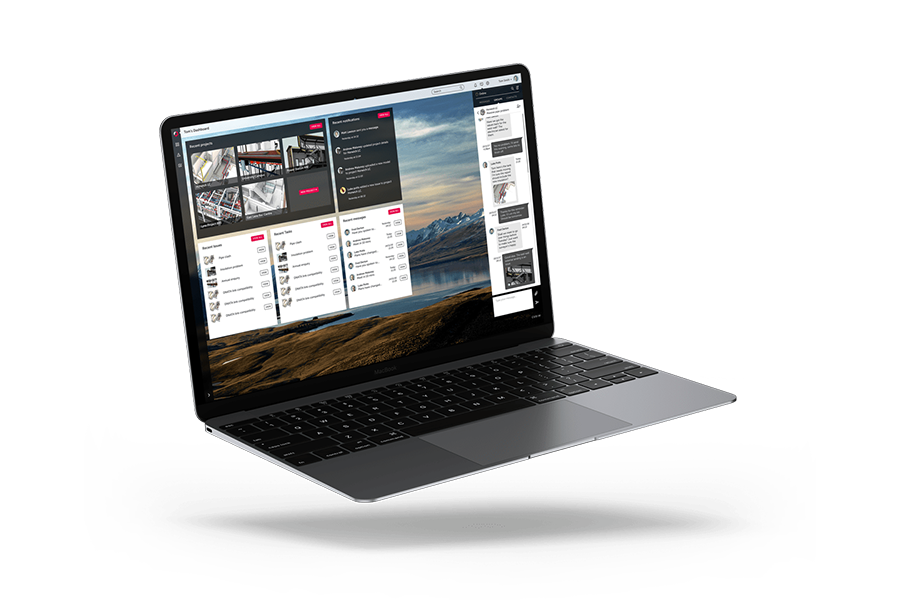
What is BIM & What does BIM mean for Contractors?
Since the government BIM Level 2 mandate came into effect in 2016, you’ve probably not stopped hearing about it.
But what is BIM?
In this blog post we hope to define BIM and what it means for those in the construction industry.
1. What is BIM?
2. The levels of BIM explained
3. BIM Level 2 Government mandate 2016
4. Is the construction industry ready to adopt BIM?
5. What to expect as a contractor using BIM?
6. BIM Level 2 for SMEs
7. How to implement BIM Level 2 in construction – 3 step guide
What is BIM?
BIM, Building Information Modelling, is a broad term that describes the process of creating digital information about a building or piece of infrastructure.
There are different levels of BIM described as ‘BIM maturity’ which explain to what level a team or organisation are working collaboratively. The idea is that the BIM Levels create an industry standard for contractors and other disciplines to work towards.
The levels of BIM maturity are explained at bim-level2.org and outlined below:
Level 0 BIM
Level 0 means no collaboration.
The output and distribution are mainly via paper or electronic prints.
Level 1 BIM
Level 1 uses a mixture of 2D information and 3D information such as visualisations and concept development models.
To reach Level 1, CAD standards should meet BS 1192:2007 and a common data environment should be used to electronically share data. Collaboration between disciplines is limited with each controlling and issuing its own information.
Level 2 BIM
Level 2 means collaborative working in a common data environment using 3D models with non-graphical data attached. The discipline-based models are created separately and are then assembled to form a federated model but they do not lose their identity.
The key output of BIM Level 2 is the Building Information Model which is the digital description of every aspect of the building asset.
Level 3 BIM
Level 3 BIM has not fully been defined nor put into practice. It is predicted that Level 2 will evolve info fully collaborative working where all disciplines use a single, shared project model.
BIM Level 2 Government Mandate 2016
In 2011 the UK government issued the Level 2 mandate which requires all centrally procured government projects to work to BIM Level 2 by April 2016.
Although this isn’t a requirement for private projects, the government are expecting the mandate to drive a change throughout the rest of the industry.
BIM Level 2 is the new standard and what is being referred to be the term ‘BIM’.
Is the Construction Industry ready to adopt BIM?
After a succession of government-backed reports that criticised the construction industry for its high costs, slow delivery, unsafe working practices and failure to innovate, many are keen to get on board with BIM.
Whilst the promises of efficiency, improved quality and decreased waste are tempting, the ‘revolutionary’ change is a difficult one to make.
This isn’t surprising, as adopting this new approach requires a significant operational and cultural shift for companies who perhaps feel like they don’t have the time, money and resources to invest.
However, the successful implementation of BIM can address the vast number of issues that have plagued the construction industry whilst delivering further benefits to individuals and the company.
We believe that the rewards that will be reaped from utilising BIM in the construction industry far outweigh any barriers.
Yes, it is an investment, but with the recent government mandate and the way that the industry is evolving in the digital sphere, it is one that can be only be delayed – not avoided.
What to Expect as a Contractor using BIM

BIM demands collaborative working, so it’s not just up to the contractors to adopt these new processes. However, it has to be said that the contractors are probably going to feel the biggest change.
With BIM, you can expect to be involved much earlier in the process. Instead of communicating with clients and designers individually and receiving separate information and models from each, everything is brought together within the Common Data Environment (CDE).
This way you can offer your expertise upfront and as a result, both waste and risk can be considerably reduced before going on-site.
Using REBIM® you will be able to open, view, interrogate and also contribute information to models when necessary. Clients and designers will be immediately updated of any changes and vice versa, improving efficiency and the quality of the output.
At the end of the project stage, REBIM® allows a smooth handover from you back to the client and owner operator. All the information uploaded to the CDE is organised and easy to refer back to at any point in the future.
Implementing BIM will force you to tackle many of the construction industry’s core issues; resulting in a much more productive, efficient and well-structured working environment for everyone involved.
BIM Level 2 for SMEs
After surveying 150 construction firms, Construction News reported that larger firms are more likely than smaller firms to use BIM.
This is unsurprising when you consider that larger companies have more resources to invest and they also manage larger projects. Interestingly, smaller firms are at an advantage in a lot of ways when it comes to adopting BIM.
As BIM represents such a drastic change in the way of working, it can be much easier for smaller companies to adapt. Smaller companies are more agile and more flexible, and perhaps more eager to gain the competitive advantage that BIM offers.

As a result, it has been found that the SMEs who take the plunge have done so at a much quicker rate and often more successfully than their larger counterparts.
So although it can seem an especially daunting investment for SMEs, you are likely to experience the benefits almost immediately and reap the long-term rewards much sooner.
How to implement BIM Level 2 in construction – 3 step guide
- Understanding BIM
- Investing in BIM Level 2 Software for Construction
- Set up a Pilot Project
Keep reading to find out how you can put these steps into action…
It’s clear that implementing BIM is a big project in itself, which is why the change doesn’t have to happen overnight.
Our guide to using BIM Level 2 in construction is designed to help you understand the steps you need to take to a collaborative, well-managed and efficient working environment.
1. Understanding BIM
From the unique ways of working to the never ending list of acronyms, there’s a lot to learn before you’re ready to start using BIM. Selling yourselves as BIM contractors before you know how to use it is one of the biggest mistakes you can make.
We suggest that you identify a team of keen individuals who will be tasked with learning about BIM and feeding back to the team. We like to call these the ‘BIM Guys’.
The BIM Guys need a good understand of the current ways of working and how this is going to change. Examples of key questions they need to ask themselves include:
- How do you currently use information for pricing and construction?
- How will you receive and use this information with BIM?
- How do you currently pass this information onto the client at the end of a project?
- How will this improve with BIM?
The B1M website and YouTube channel offer fantastic indepth resources for anyone wanting to learn more and get inspired.
2. Invest in BIM Level 2 Software for Construction
BIM is not just software, it is a process, but a purpose-built software facilitates the successful implementation of BIM.
REBIM® is designed to be easy-to-use, helping you to remove the technical barriers of BIM so you can focus on the process itself.
REBIM® provides you with a CDE where well-structured digital information is available for all the necessary parties to access. As a result, collaborative working becomes automatic and you naturally start to use and experience the benefits of BIM.
3. Set up a Pilot Project
Instead of asking the whole firm to start using BIM at once, we recommend that the BIM coordinators carry out a pilot project to get a feel for the software.
Within the team there needs to be assigned an Information Manager who will set up and manage the CDE. It isn’t their job to do BIM for everyone but they need to facilitate the process. This would normally be the Design Manager or Project Team Lead.
After the pilot project, the BIM Guys can feedback to the rest of the team. With their experience, they will be able to motivate and educate the wider team when it comes to using BIM on future projects.

For a lot of construction companies, BIM represents a huge change though ultimately, software and training are short term investments for long term gain.
With REBIM®, you can remove the technical barriers of BIM for you and your team and focus on the process which will not only transform your ways of working, but also your output.
To find out how you can introduce REBIM® to your team, click here to see which packages are available. Alternatively, book a consultation where one of the REBIM® team will be happy to answer any of your questions.


